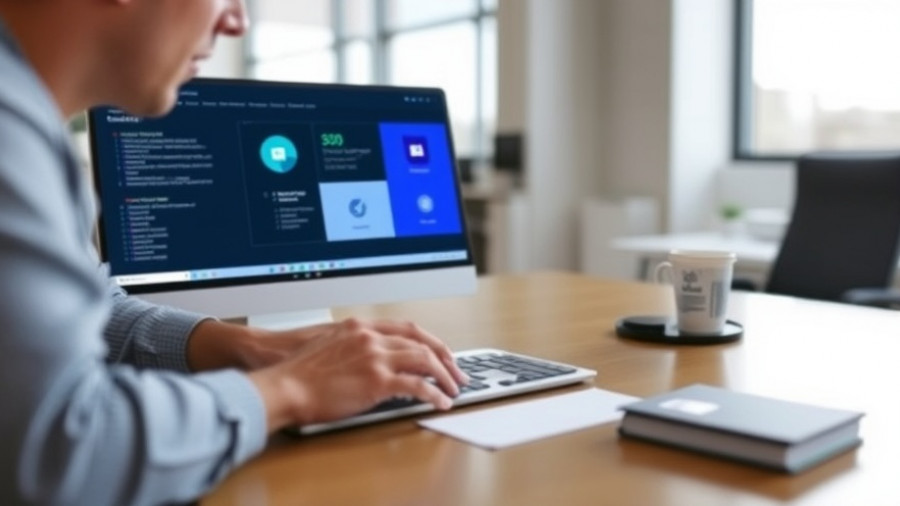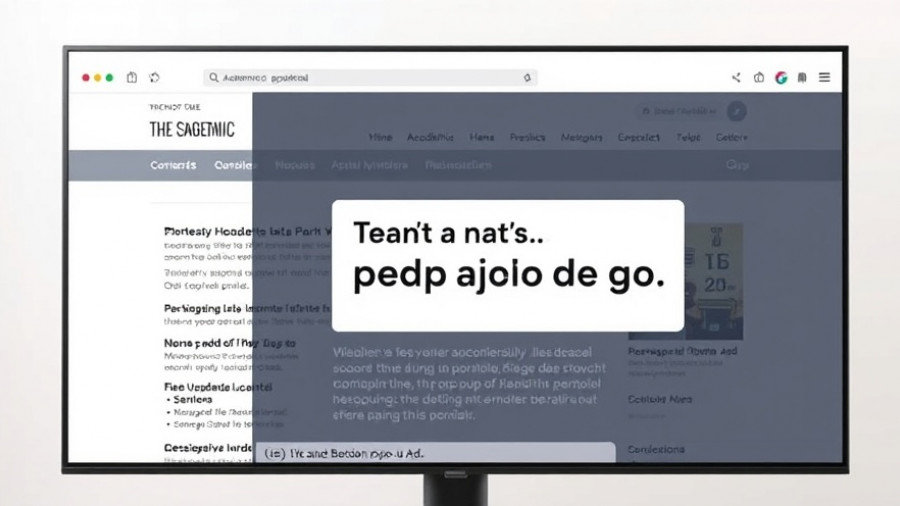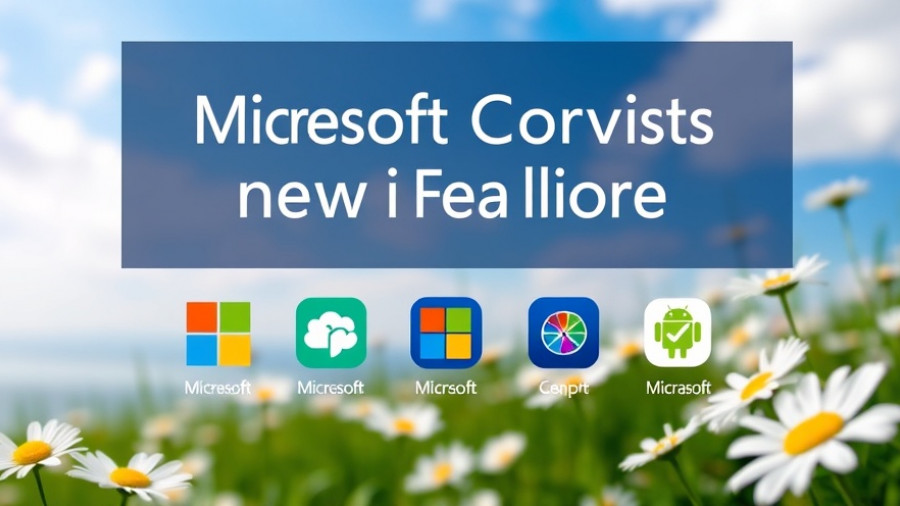
Introducing Vibe Working: A New Era of Collaboration with AI
Microsoft has taken a giant leap forward in artificial intelligence integration with its new concept of "vibe working." By leveraging AI technology through its Microsoft 365 Copilot, users will see a significant transformation in how they interact with productivity applications such as Excel, Word, and PowerPoint. The groundbreaking Agent Mode feature promises to reshape the productivity landscape, making intricate tasks easier and more intuitive through a collaborative dialogue between human and AI.
How Agent Mode Transforms Excel and Word
With the introduction of Agent Mode, users can initiate tasks in Excel and Word by providing simple prompts. The AI then takes charge, automating multi-step processes that typically require extensive user input. For instance, in Excel, users might instruct the AI to run a comprehensive analysis of sales data, and the AI will not only perform calculations but also generate insightful visualizations based on the results. This effectively democratizes data analysis, making it accessible to individuals who might not have expertise in Excel formulas.
In Word, the writing process becomes interactive. A user could request a project summary, and Agent Mode aids in drafting the content while also suggesting modifications. This creates a collaborative environment where the human user and AI are in constant dialogue, thereby enhancing productivity and quality of output. With the application of vibe writing rather than vibe coding, Microsoft hopes to make writing feel less like a chore and more like an engaging conversation.
The Role of the Office Agent in Copilot Chat
The new Office Agent featured in Copilot chat further enhances this collaborative model. By utilizing advanced AI models from Anthropic, the Office Agent assists with generating professional documents and engaging presentations. For example, users can initiate discussions for a PowerPoint presentation on market trends, and the Office Agent conducts research and offers various draft versions, creating an interactive feedback loop that allows for easy refinements.
This chat-first approach shifts the paradigm from traditional document creation to AI-assisted brainstorming sessions, positioning the Office Agent as a critical tool in modern work setups where efficiency and collaboration are valued.
Expanding Access and Capabilities Amid Competition
Microsoft intends to release these features to Microsoft 365 Copilot licensed customers and subscribers soon, enhancing their productivity with AI-powered capabilities. Microsoft is motivated by the competitive landscape, where firms like Google and OpenAI are aggressively incorporating generative AI into their productivity tools. By introducing vibe working and agent-based functionalities, Microsoft seeks to not only enhance user experience but also secure its position as a leader in the AI-driven productivity space.
Moreover, with a reported revenue of $87.8 billion from Microsoft 365 products and services, these advancements signify a robust investment in the future of work, promoting efficiencies and productivity enhancements that modern users demand.
What This Means for the Future of Work
The concepts behind vibe working represent a fundamental shift in how tasks are tackled in the workplace. Moving from a traditional, linear approach to one that fosters collaboration between human intelligence and artificial intelligence can open new avenues for creativity and efficiency. As organizations increasingly seek to automate repetitive tasks and reduce workloads, vibe working could become the norm in workplace interactions, allowing employees to focus on higher-value activities that require critical thinking and creativity.
While Microsoft's competitors ramp up their AI capabilities, the true test for vibe working will be its implementation and user reception. The way forward is deeply intertwined with the evolving dynamics of human-AI collaboration, and Microsoft appears poised to lead this transformative change within the realm of productivity software.
As the landscape of work continues to adapt, workers everywhere should prepare for a future where AI not only supports productivity but also enhances their capabilities to innovate and interact creatively.
Explore everything Microsoft has to offer by trying out the new vibe working features in Microsoft 365 Copilot from today!
 Add Row
Add Row  Add
Add 




Write A Comment